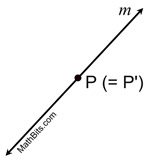
Bolzano's theory is unquestionably lacking in these.īolzano returned to geometrical studies in the 1830s and 1840s. Theorems and their proofs which relate definitions one to another, are much more important. But, while definitions have a certain value in mathematics, no fruitful mathematical theory can consist entirely of them. Yet if one asks “what is” questions – What is a line?, What is a continuum? – then one must expect essentialist answers. The end product of his research, a seemingly endless string of definitions with hardly a theorem, must be regarded as disappointing. Undoubtedly, this essentialist philosophy is to blame for the main shortcomings of his geometrical investigations. Bolzano's concern over definitions required that he seek the “true” definitions for the objects of geometry. His youthful Betrachtungen is heavily imbued with philosophy and this illustrated his deep concern for the logical and foundational issues in mathematics. “My special pleasure in mathematics rests only in its purely speculative part”, admitted Bolzano in his autobiographical writings. For instead of taking a line as the path of a moving point, as for example was done by Abraham Kästner (1719–1800), Bolzano attempted to define the concept of line independently of any idea of motion.Ī basic feature of Bolzano's outlook on research in mathematics was his view that mathematics stands in close relation to philosophy. This purge of motion from geometry is relevant to Bolzano's dimension-theoretic definitions of line, surface, and solid. For example, he regarded it a mistake to make any appeal to motion as it was foreign to pure geometry. Rigour in pure mathematics was uppermost in his thoughts. Bolzano stressed the theoretical role of mathematics and its “usefulness” in exercising and sharpening the mind. This dull essentialist problem of definitions, conceived within the limits of Euclidean geometry, led him to break from the bonds of traditional geometry. “At the present time”, he wrote in 1810, “there is still lacking a precise definition of the most important concepts: line, surface, solid”.
.png)
Dimension theory is primarily a modern subject of mathematics its main historical roots lie in the early nineteenth century when the Bohemian priest Bernard Bolzano (1781–1848) examined several facets of the definitional problem and proposed some interesting solutions.īolzano sought precise definitions of geometrical objects. While all of these touched on dimension in some form or other, there is no suggestion that they sought to create anything like modern dimension theory or that they were working towards modern dimension theory as it stands today.

Other eminent philosophers and scientists considered questions about dimension including Galilei Galileo (1564–1642), Gottfried Wilhelm Leibnitz (1646-1716) and Immanuel Kant (1724–1804). For, as the Pythagoreans say, the All and all things in it are determined by three things end, middle and beginning give the number of the All, and these give the number of the Triad. And there is no magnitude besides these, because the dimensions are all that there are, and thrice extended means extended all ways. Of magnitude that which (extends) one way is a line, that which (extends) two ways a plane, and that which (extends) three ways a body. In it, Aristotle is more definite, even if its tone is more metaphysical: A passage from Aristotle's On the Heavens shows a similar motivation. Euclid's definitions show a concern for a rudimentary “theory of dimension” by the recognition of a “dimension” hierarchy in the sequence of primary geometrical objects: point, line, surface, solid.
A solid is that which has length, breadth and depth ( Book XI). Join D and E, and join E and F.Īccording to Euclid, a point is that which has no part, a line is breadthless length, and a surface is that which has length and breadth only ( Book I). In triangle ABC, let D be the midpoint of side AB, E of side BC, and F of side AC. 12 Here is an example that Henri Lebesque says was current among schoolboys near the turn of the twentieth. The problem is that while in finitary Euclidean geometry, intuition (visual imagination) by and large did not lead people recognizably astray, intuition had begun to founder on paradox among infinitary processes by the turn of the nineteenth century. In our expositions, for example, one of the earliest concepts distinctive of the calculus is the notion of, say, a point being the limit of an infinite sequence of points. But as the calculus developed during the eighteenth century, its infinitary aspect became inescapable. Archimedes had given some gorgeous limiting arguments, but their infinitary aspect was much of what made them so striking. Angles get bisected and polygons have finitely many sides. Hart, in Philosophy of Mathematics, 2009Įuclid's geometry is mostly finitary.


 0 kommentar(er)
0 kommentar(er)
